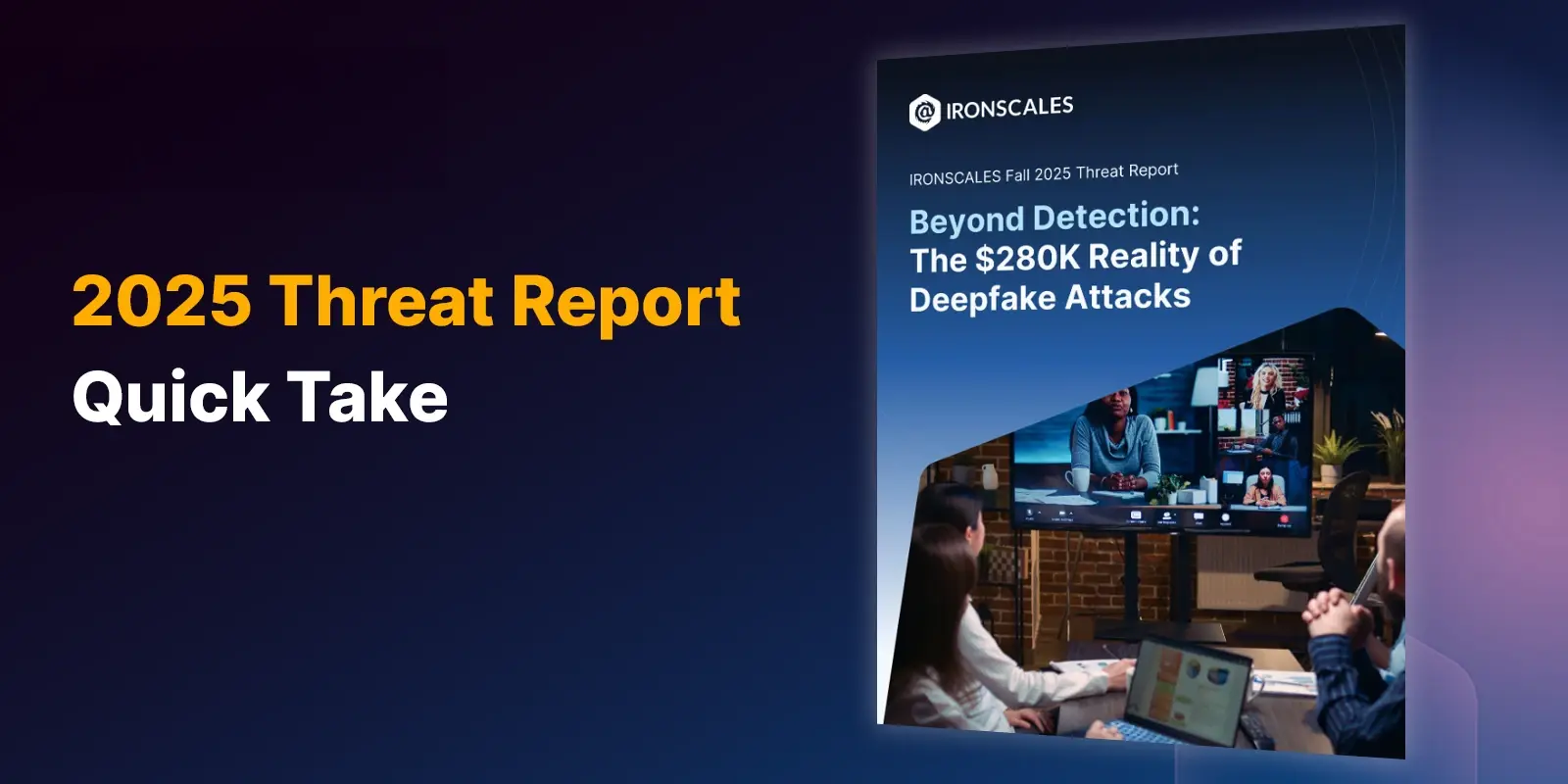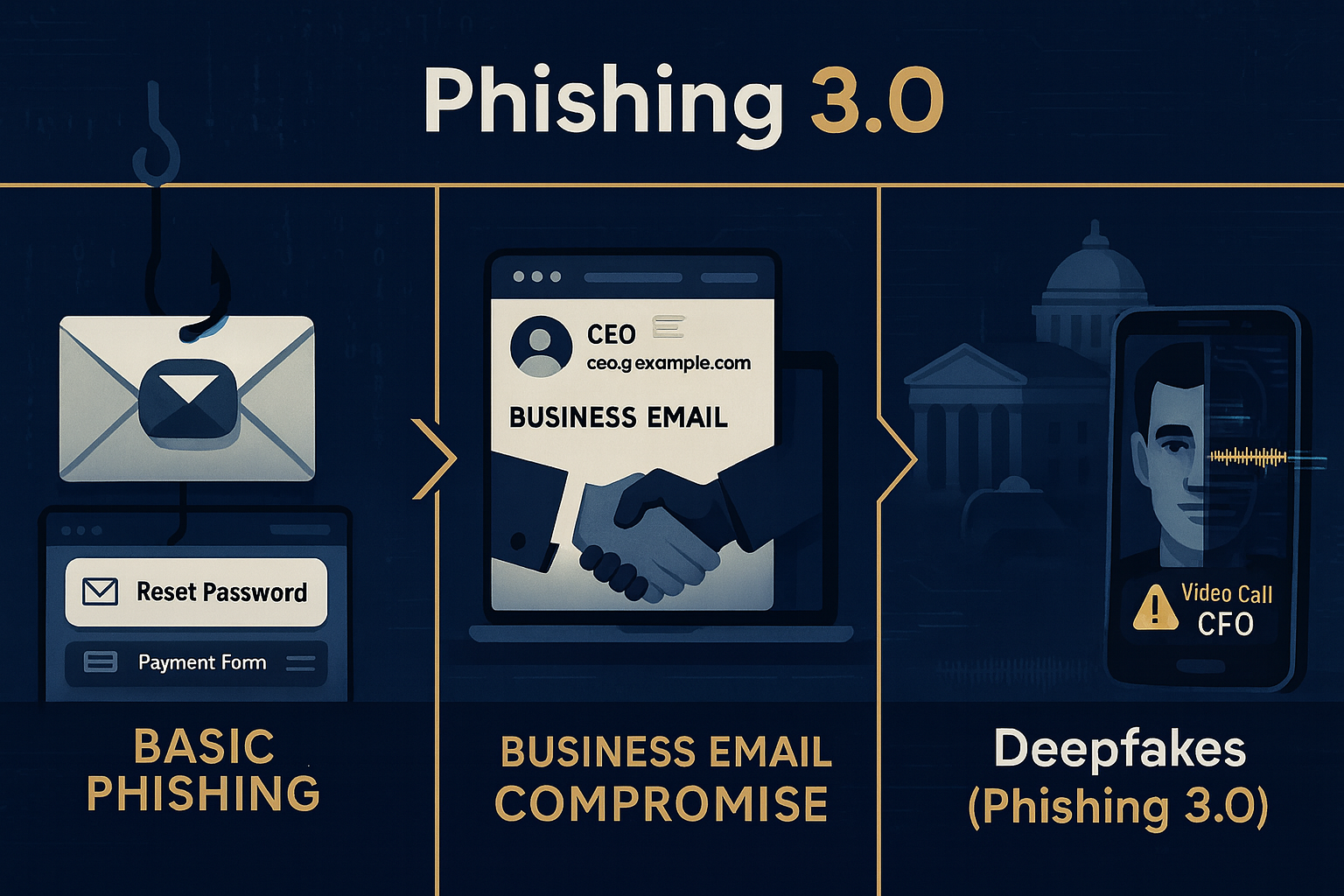Table of Contents
The emergence of deepfake technology is not merely a fleeting news story—it's a transformative force altering our perspective on digital security. The latest IRONSCALES Fall 2024 Threat Report showed that nearly 75% of organizations have already encountered deepfake-related incidents over the past year.
If that stat doesn’t make you pause, it should. It’s clear that businesses need to step up and get proactive to defend against this rapidly evolving threat landscape.
Deepfakes and Business Security
Deepfakes, those AI-generated pieces of content that can mimic voices, faces, and even mannerisms pose a serious risk to businesses, especially in email and social engineering schemes. In fact, 64% of IT professionals we surveyed expect an increase in deepfake-enabled cyberattacks in the next 12-18 months—outpacing even ransomware and account takeovers.
Why does this matter so much? Because email, the lifeblood of business communication, is also a prime target. Over half of professionals (53%) now label email as an "extreme threat" for deepfake-fueled attacks. That’s a wake-up call for everyone to rethink their security approach.
Five Strategies for Business Preparedness
So, what can we do to keep our organizations safe? Here are some strategies that I believe are essential:
1. Educate and Train Teams
Deepfake technology is advancing at breakneck speed, and our teams need to stay sharp. It’s crucial to offer training that teaches employees to spot the signs of manipulated media, like off-kilter facial movements or subtle delays between audio and video. While 68% of companies have started some form of deepfake training, many still feel unprepared. We need to bridge that confidence gap. I covered some really useful tips in my previous blog, The Rise of Deepfake Social Engineering.
2. Strengthen Verification Protocols
One key rule to really embrace, trust but verify. For important requests or big transactions, encourage employees to use secure, alternate channels for confirmation. This extra step is key in preventing impersonation, especially when a deepfake voice or video could be at play.
3. Leverage Detection Tools
The best defenses combine human awareness with the right tech. AI-powered tools that detect synthetic media can be integrated into existing security frameworks to provide real-time alerts. From my perspective, incorporating Adaptive AI into our systems, a focus here at IRONSCALES, is crucial for staying ahead of sophisticated threats.
4. Adopt a Layered Defense Strategy (I know, not news)
Relying on a single tool or approach just isn’t enough. I recommend a layered defense strategy that merges automated detection tools with the human insights of your team. Our research confirms that the mix of AI and user feedback greatly enhances our ability to identify and react to complex threats.
5. Prepare for Incident Response
Lastly, a robust incident response plan isn’t optional; it’s essential. Your plan should lay out clear steps for identifying and containing deepfake incidents, communicating with stakeholders, and quickly deploying remediation to limit damage.
Deepfakes are not just a theoretical concern; they’re here and shifting the cybersecurity landscape under our feet. While 73% of organizations are planning to ramp up their investments in deepfake protection within the next year, we can’t ignore the gap in readiness that still exists.
By prioritizing team education, deploying detection tools, and strengthening verification processes, we can build resilience against this wave of cyber threats.
IRONSCALES Fall 2024 Report - Deepfakes
Deepfakes: Is Your Organization Ready for the Next Cybersecurity Threat?
Explore More Articles
Say goodbye to Phishing, BEC, and QR code attacks. Our Adaptive AI automatically learns and evolves to keep your employees safe from email attacks.

/Concentrix%20Case%20Study.webp?width=568&height=326&name=Concentrix%20Case%20Study.webp)







.webp?width=100&height=100&name=PXL_20220517_081122781%20(1).webp)






